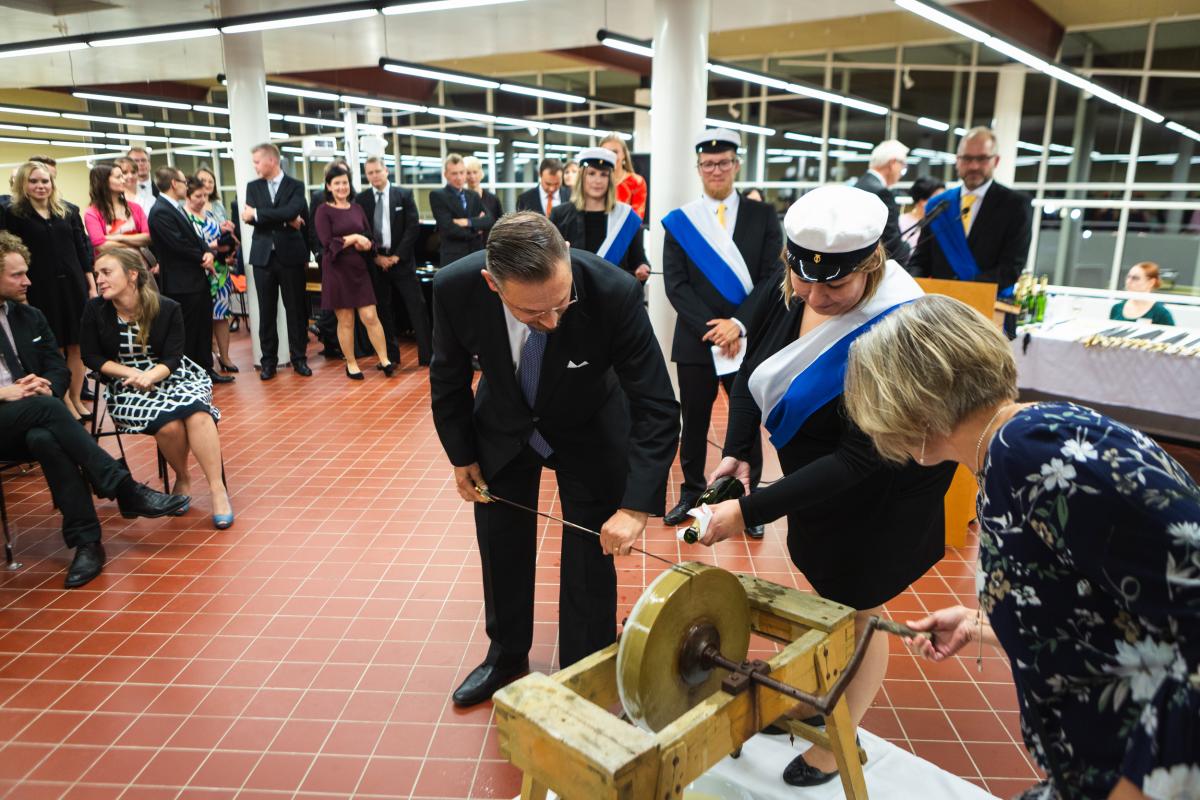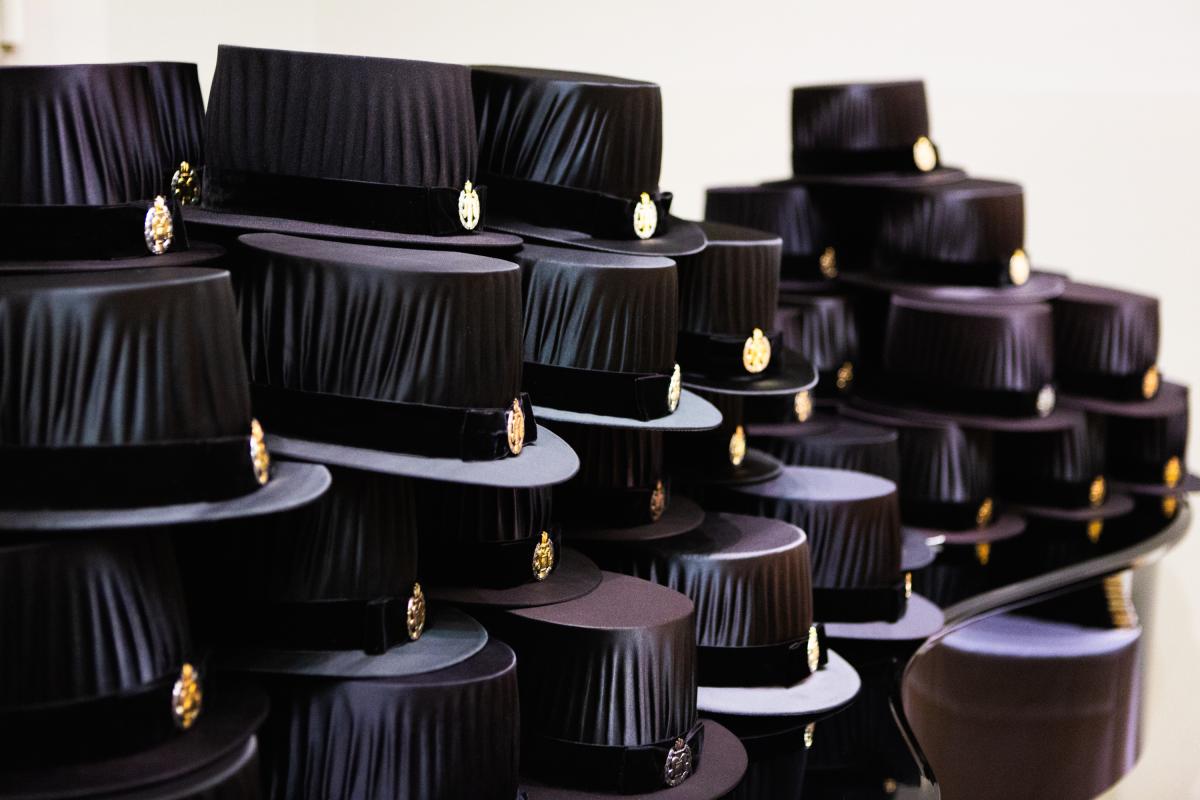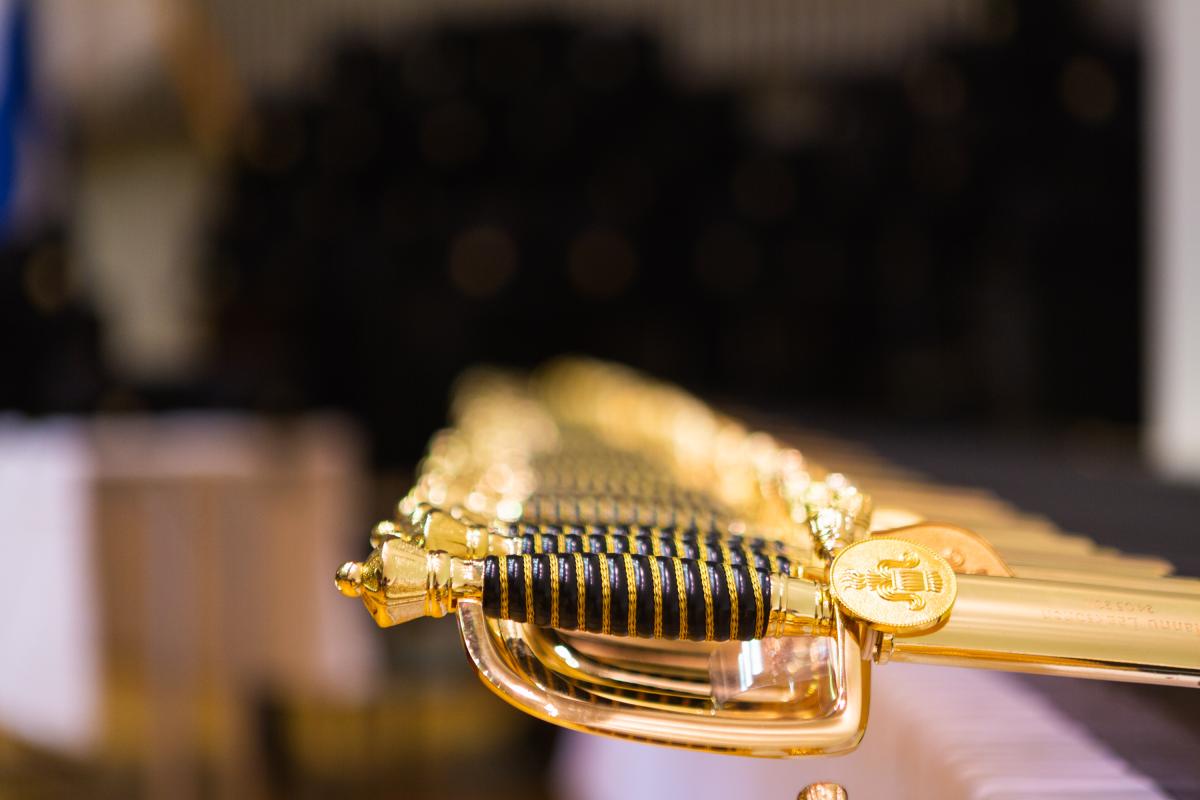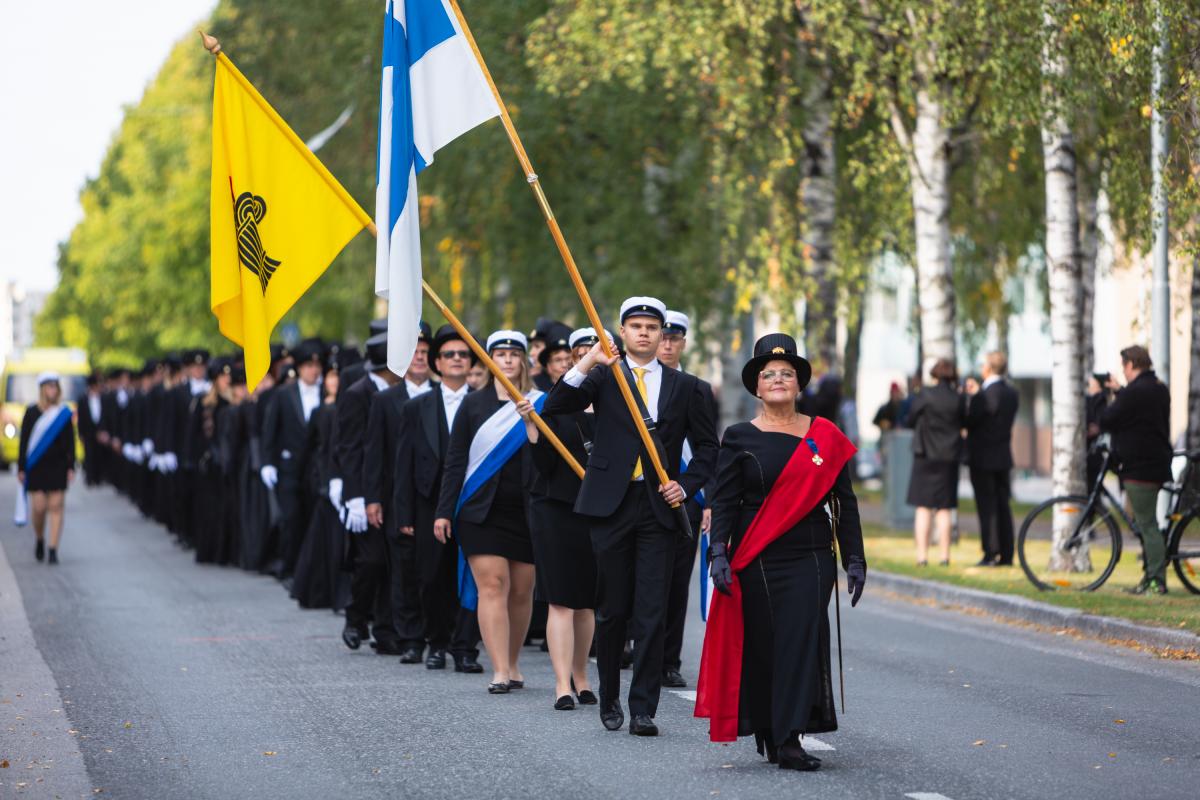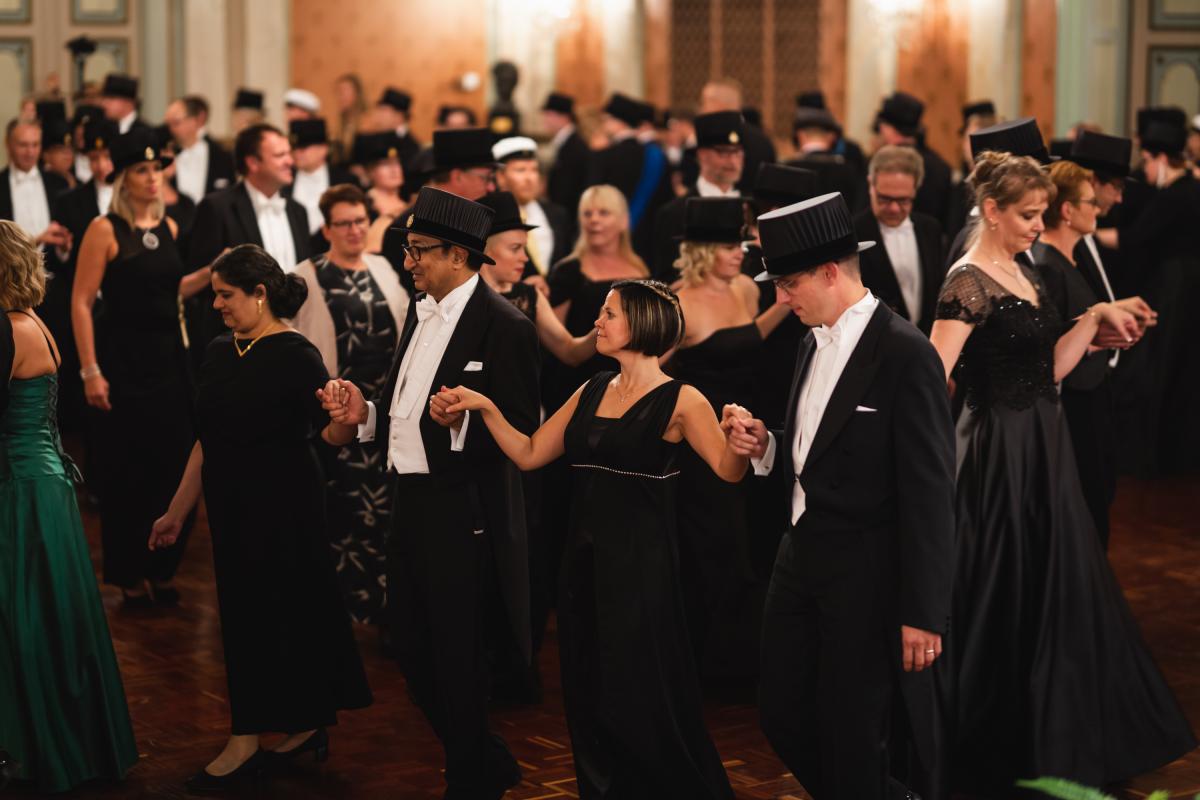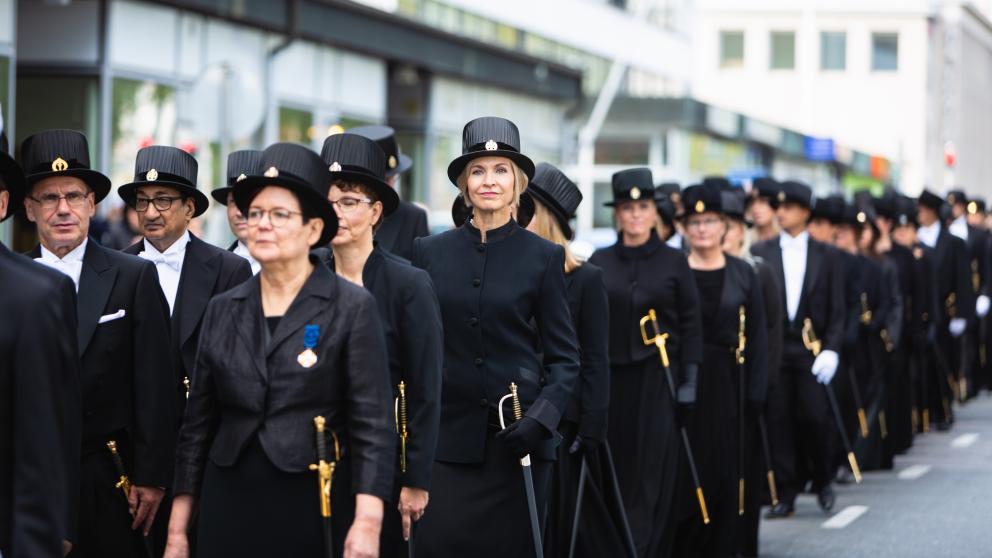
Academic traditions – Conferment ceremony is academic celebration at its best
–The conferment ceremony is the highest celebration of academic work, conferring doctors and honorary doctors from different disciplines. In the past, the University of Vaasa also had a conferment ceremony for masters, says Pirjo Laaksonen, Professor Emerita at the University of Vaasa and member of the conferment committee.
The honorary doctorate is the highest recognition that universities can award. In connection with the conferment ceremony, the university respects foreign and domestic scientifically or socially distinguished persons of its choice by awarding them this title.
Conferment has a long tradition
The Finnish word for conferment, “promootio”, comes from the Latin verb ‘promovere’: to move forward, to advance, to promote. In the act of conferment, the doctors receive the doctoral insignia: a hat, a sword and a diploma.
The conferment tradition originates from the Middle Ages, from the oldest universities in Europe. Conferment ceremonies were held at the University of Bologna as early as in the 12th century and in Paris in the 13th century, and they became quite common in Western countries in the 14th century. The conferment tradition came to Finland from Uppsala, and the first ceremony took place at the Royal Academy of Turku in 1643. At that time, 10 masters of philosophy were conferred. Since then, the conferment tradition has continued in Finland uninterrupted throughout the history of universities.
The conferment ceremony usually lasts three days and consists of several different events. Traditions play an important role in the ceremony.
– Conferment is a very traditional and carefully planned ceremony with dress codes and practices that create a festive setting for a warm and memorable event.
The conferment ceremony reflects the times and the characteristics of the university, so the traditions have been shaped in different ways at different universities. Let’s take a look at how the doctoral conferment ceremony is celebrated at the University of Vaasa.
Preparation for the act of conferment
At the University of Vaasa, the doctoral conferment ceremony lasts three days. On the eve of the conferment day, there will be last dance rehearsals, rehearsals for the actual act of conferment and, as a climax, the sword-whetting ceremony.
The sword-whetting ceremony is attended by the promovendi, that is, the doctors to be conferred, and their partners. It is a fun and playful cocktail event, where the participants get ready together for the official part of the following day, the act of conferment.
The event opens with a speech to the sword, after which the actual whetting begins. The marshals, a group of assisting students, turn the grindstone while the promovendi polish their swords against it.
Throughout the weekend, the ceremony is led by the faculty professor, assisted by the head marshal. They are the officials of the conferment ceremony.
Black elegance
The act of conferment as doctor happens the following day. At this event, the participants wear black because it is perceived as a festive colour for academics. However, if there were masters to be conferred, the female masters would wear white and the men would wear a tailcoat – as in the doctoral conferment.
– By dressing in black, we give priority to the matter itself instead of showing off our clothes. A uniform colour emphasises unity over individuals. Black is low-key, dignified and formal.
At the event, each promovendi in turn is conferred as doctor by the dean of the faculty, i.e. the conferrer. However, the conferrer does not necessarily have to be the dean; it is enough that they are a professor in the discipline and have been conferred as doctor.
In addition to the conferment, the celebration includes speeches and music. The University of Vaasa has its own conferment cantata played in connection with the act of conferment, "Kongressin jälkeen", composed by Ilkka Kuusisto.
In the act of conferment, doctors receive their insignia
The doctoral hat, which looks like a top hat, is probably the best-known symbol of a doctor. The hat was considered the emblem of a free and independent man already in ancient Rome. Freed slaves were given red hats to mark their new status, and Roman senators wore purple hats. In universities, the doctoral hat has always symbolised the freedom of science. The development stages of the doctoral hat have remained unclear in many respects. In the old University of Turku, at least masters of philosophy received purple berets at the conferment ceremony, like in Uppsala. The doctoral hat used today was apparently introduced after the 1828 rule reform and the university’s move to Helsinki.
The colours of the hats have varied and still vary according to the discipline. Today, the hats are purple for doctors of theology, dark red for doctors of law, green for doctors of medicine, tricolour blue for doctors of art, dark blue for doctors of sport and health sciences, and black for other disciplines, also at the University of Vaasa.
The tradition of doctoral swords originates from the faculty of medicine. The sword as a doctoral symbol was introduced in Finland at the 200th anniversary celebration of the University of Helsinki in 1840. The doctoral sword evolved from the official sword used by noble civil servants. At that time, its purpose was to show social status. Today, the doctoral sword symbolises truth; it is a symbolic weapon of the spirit for defending what is true, right and good.
The doctoral sword primarily used in Finland is the official Finnish civilian sword with a black handle, which is of German origin. In addition to the sword itself, the set includes a scabbard and a holder. The university’s emblem is attached to the sword, and the name and date are engraved on it.
Finishing off with a ball and picnic
After the act of conferment, the participants proceed as an impressive procession to a religious service or an alternative non-denominational event.
– The procession is the visible part of the conferment ceremony, running along the Kirkkopuistikko street. Friends and relatives of the participants, as well as many residents of the city, gather to follow the procession’s progress towards the church.
The atmosphere in the darkening September evening is mysterious, but above all celebratory. The evening programme includes first the conferment dinner and then a ball at Vaasa City Hall. The party continues until the early hours of the morning. Those who manage to stay up also get to hear a speech to the morning sun.
Silk, satin and taffeta rustle as the newly conferred doctors and their partners start dancing. The ball begins with old ballroom dances, some of which may be familiar from the upper secondary school seniors’ ball. The marshals stand straight and watch, and they are also available as dance partners for participants who do not have one.
At the end of the ball, the marshals are released from duty and the conferrers leave through a guard of honour. After that, the participants move on to more modern dances and enjoy a buffet. The celebration ends with a speech to the rising sun by one of the new doctors.
The following morning, the participants get together once more for a picnic. Instead of their doctoral hats, they wear their student caps. The picnic includes relaxed music and joyful conversation while brunching in the maritime landscape.
Read more about doctoral conferment ceremony
The sixth doctoral conferment ceremony of the University of Vaasa will be held from 19 to 21 September 2024
Registration to doctoral conferment ceremony is now open for all doctoral candidates at the University of Vaasa who have not participated in previous doctoral conferment ceremony.
